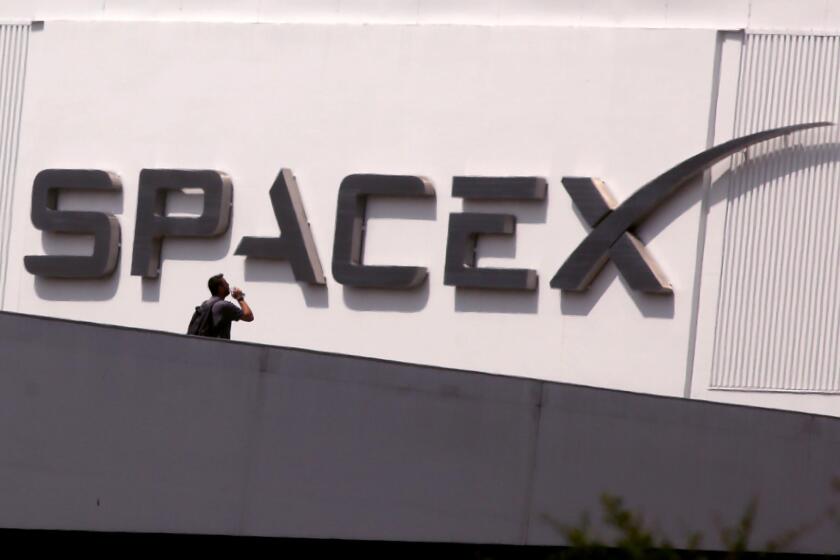FAA clears SpaceX’s Falcon 9 rocket for launch after malfunction

SpaceX’s Falcon 9 rocket has been cleared by the Federal Aviation Administration to resume launch operations after the company determined the cause of an engine failure earlier this month.
The company’s primary commercial rocket was lifting a payload of 20 internet Starlink satellites into orbit on July 11 when the second-stage engine misfired, leaving the satellites in a lower orbit than intended. They later fell to earth and were destroyed in the atmosphere.
Elon Musk’s announcement that he’s moving SpaceX headquarters to Texas could present a blow to Hawthorne and the Southern California space economy that it helped to revive.
SpaceX said Friday the cause of the misfire was a liquid oxygen leak in a line leading to a pressure sensor. The company — whose founder Elon Musk recently announced plans to move the company’s headquarters from Hawthorne, Calif., to the outskirts of Brownsville, Texas — said the leak developed when the line cracked due to a loose clamp.
The FAA said it authorized SpaceX to resume launches on Thursday since the mishap did not endanger the public, but the investigation remains open.
The Falcon 9 has been critical in establishing SpaceX’s Starlink satellite broadband network. It also handles commercial payloads and launches the company’s Dragon capsules, which carry cargo and astronauts to the International Space Station.
The Falcon 9, which has a reusable first stage, has launched a total 352 missions, according to SpaceX. The company said the first stage used in the failed launch returned to Earth safely. Prior to the mishap, the Falcon 9 had not failed in more than 300 flights.
The rocket last failed in flight in June 2015 when it was carrying out an uncrewed cargo resupply mission to the space station. A Falcon 9 exploded on the launchpad at Cape Canaveral Air Force Station in September 2016 during fueling while carrying a satellite payload.
The importance of the rocket to NASA’s space program has been underscored this month by the troubles experienced by Boeing’s Starliner capsule, which is on its third test flight to the space station.
The capsule, intended to give NASA another vehicle to reach the station, launched its first human flight June 5 for what was expected to be an eight-day mission. But it has remained docked to the station for seven weeks due to helium leaks and a malfunctioning of its thruster engines.
NASA and Boeing officials said Thursday that Starliner could be cleared to return the astronauts to earth as soon as next month, but there has been speculation that a Dragon capsule launched by a Falcon 9 may have to retrieve them.
More to Read
Inside the business of entertainment
The Wide Shot brings you news, analysis and insights on everything from streaming wars to production — and what it all means for the future.
You may occasionally receive promotional content from the Los Angeles Times.












